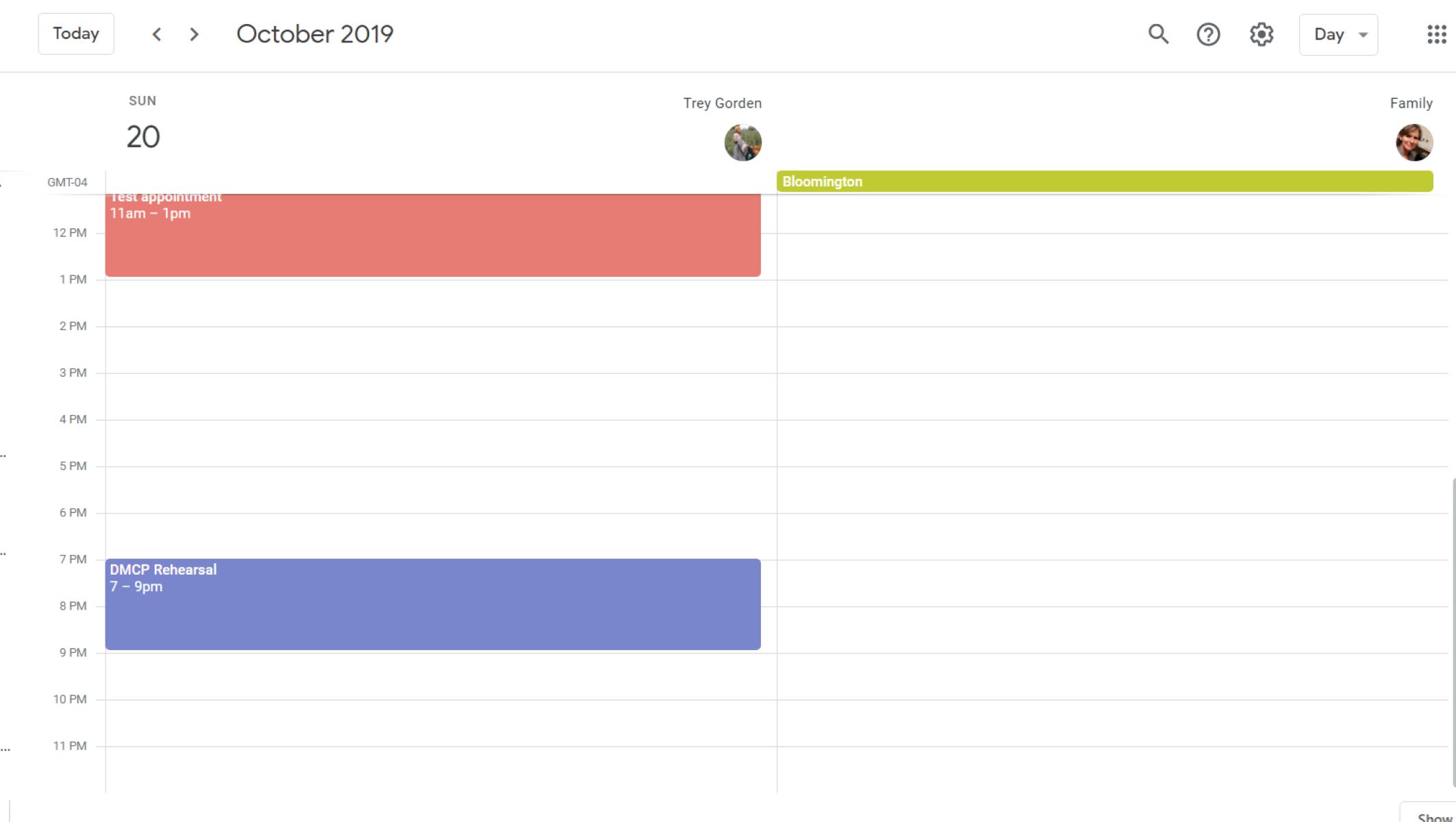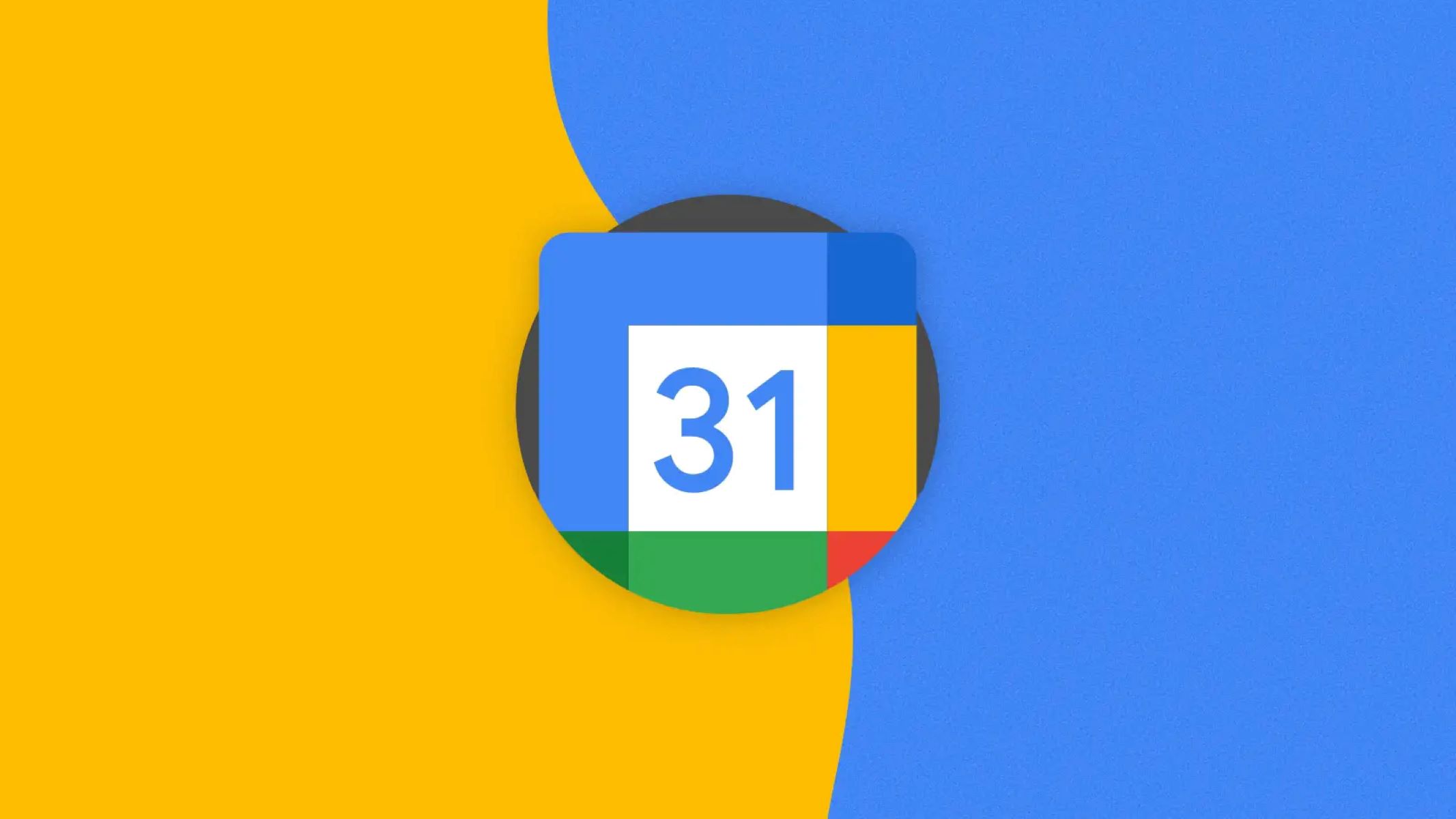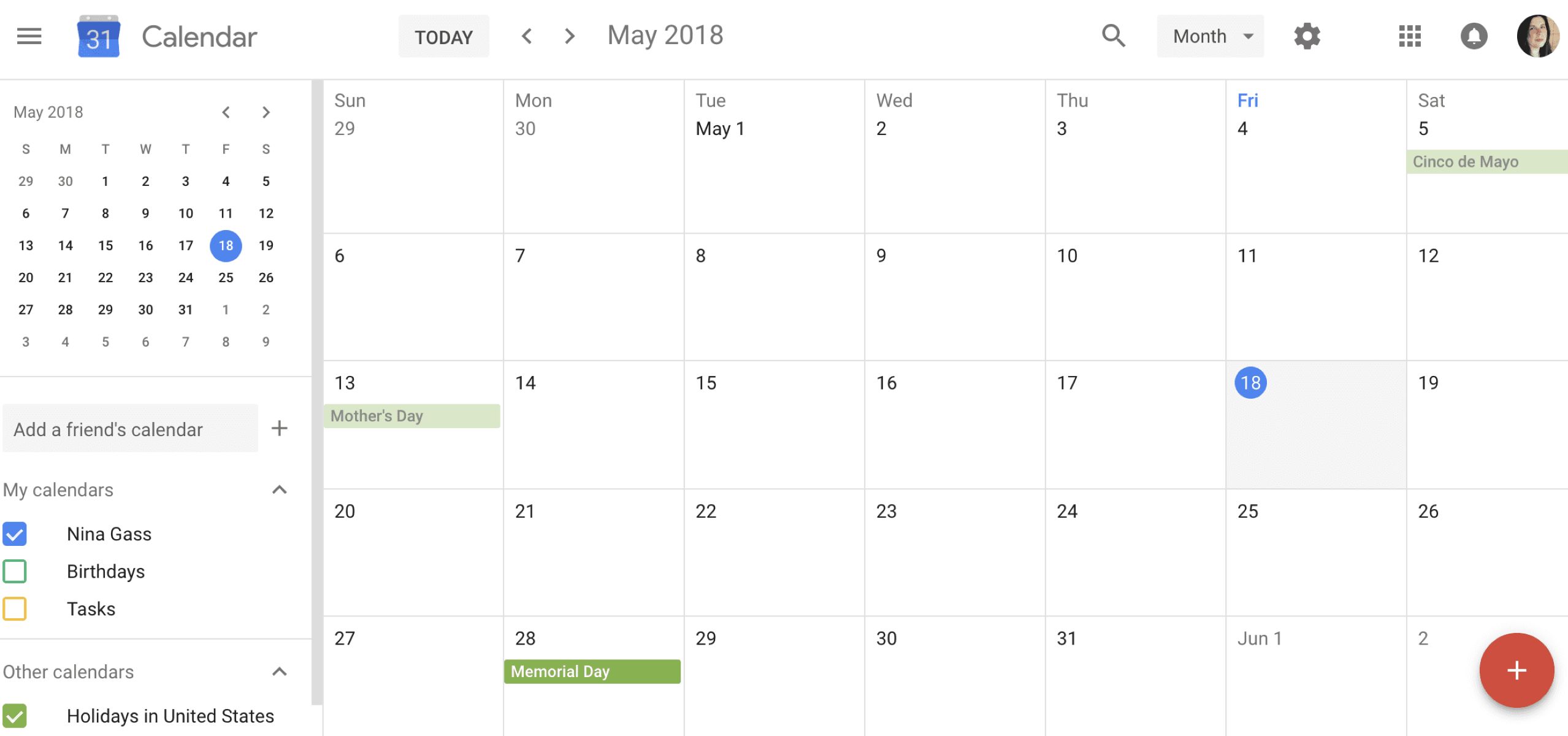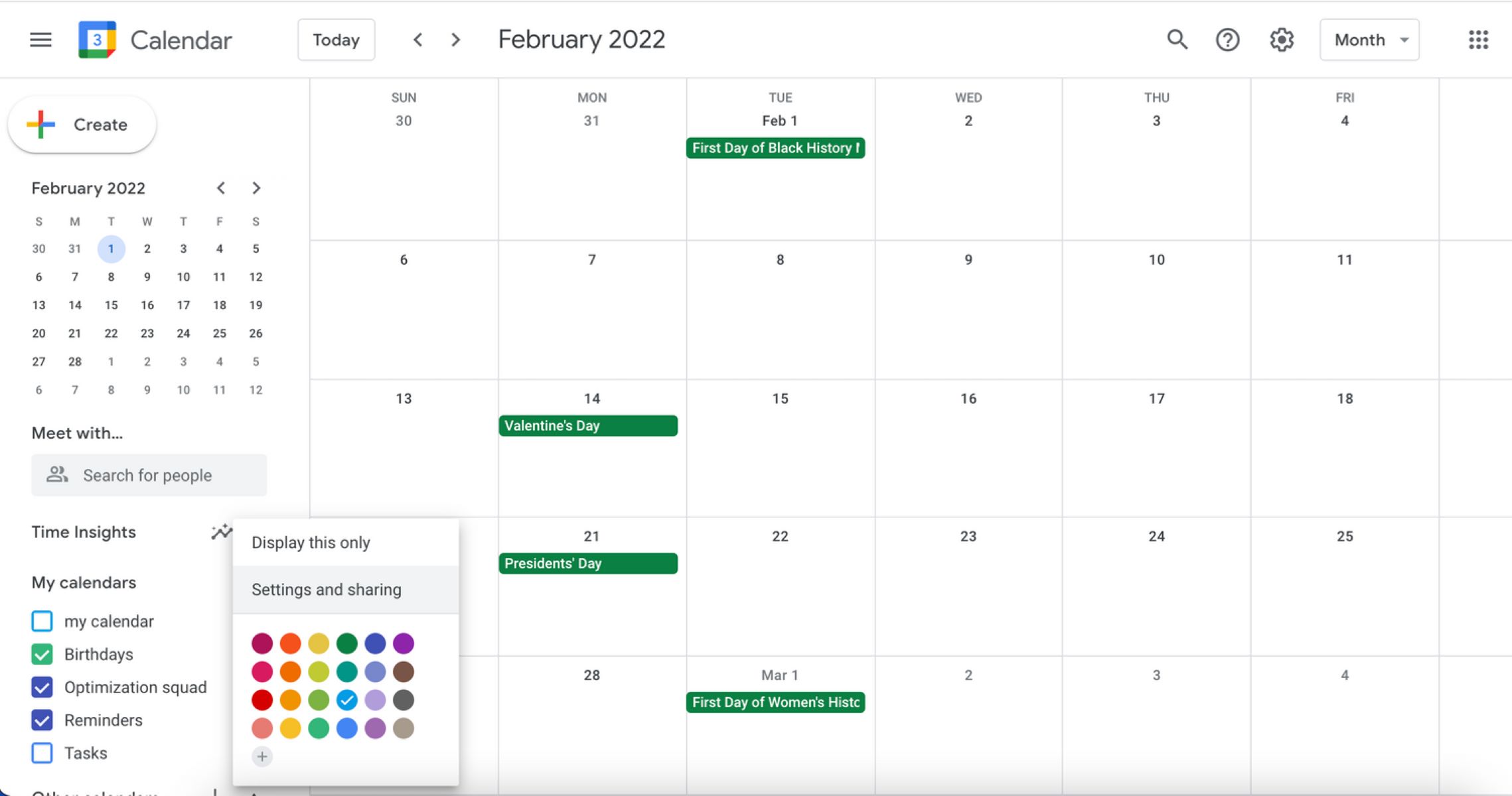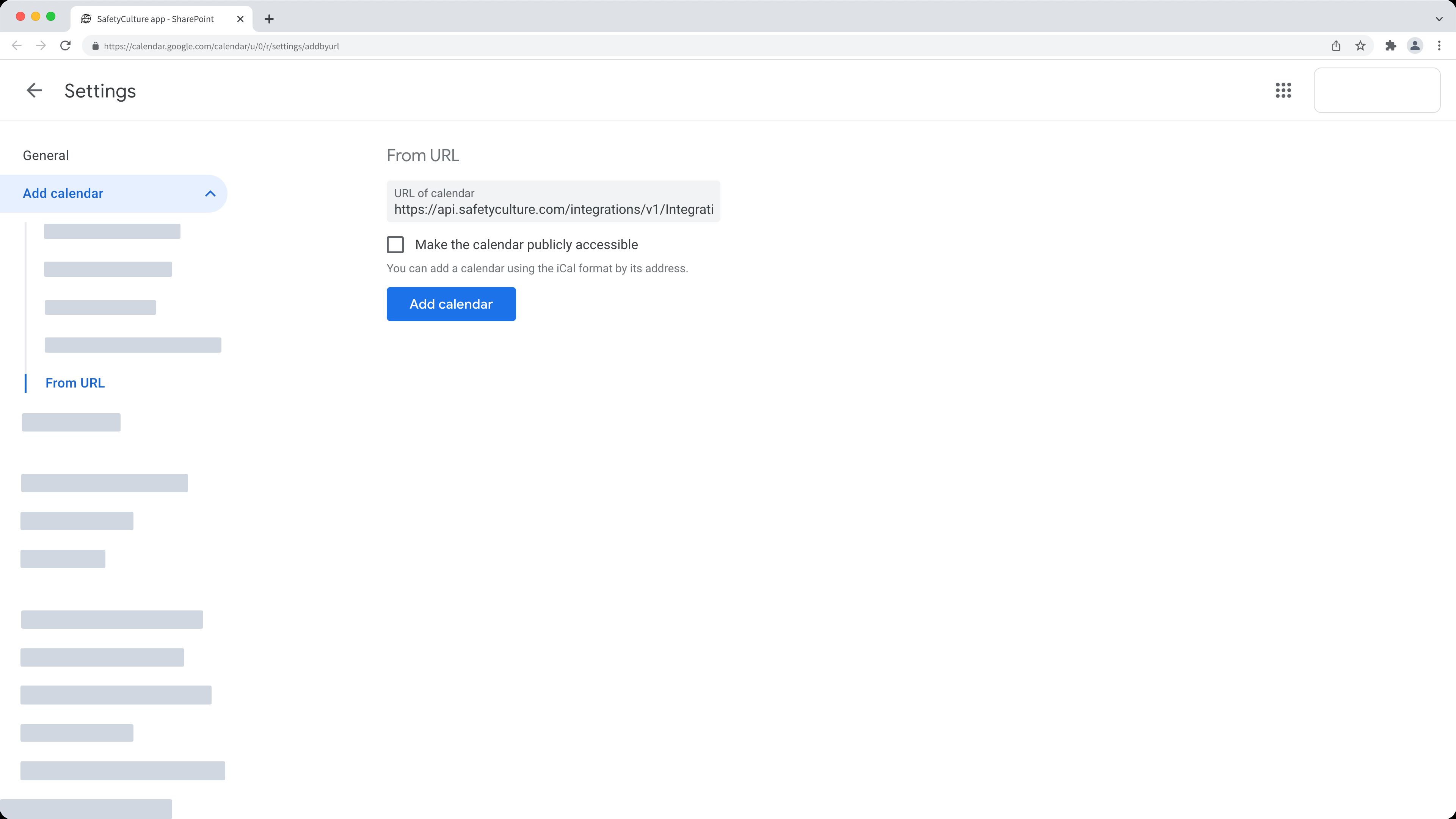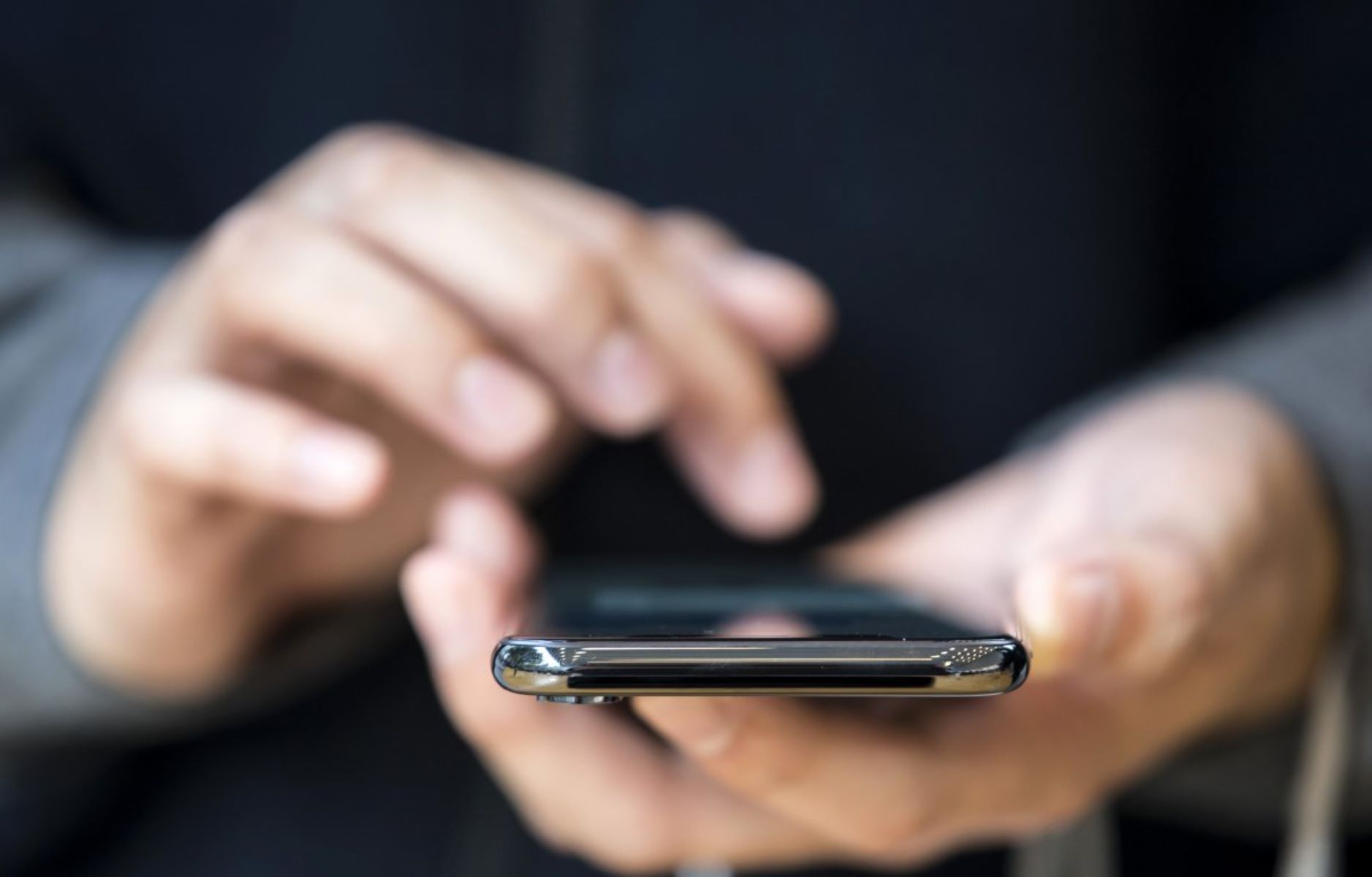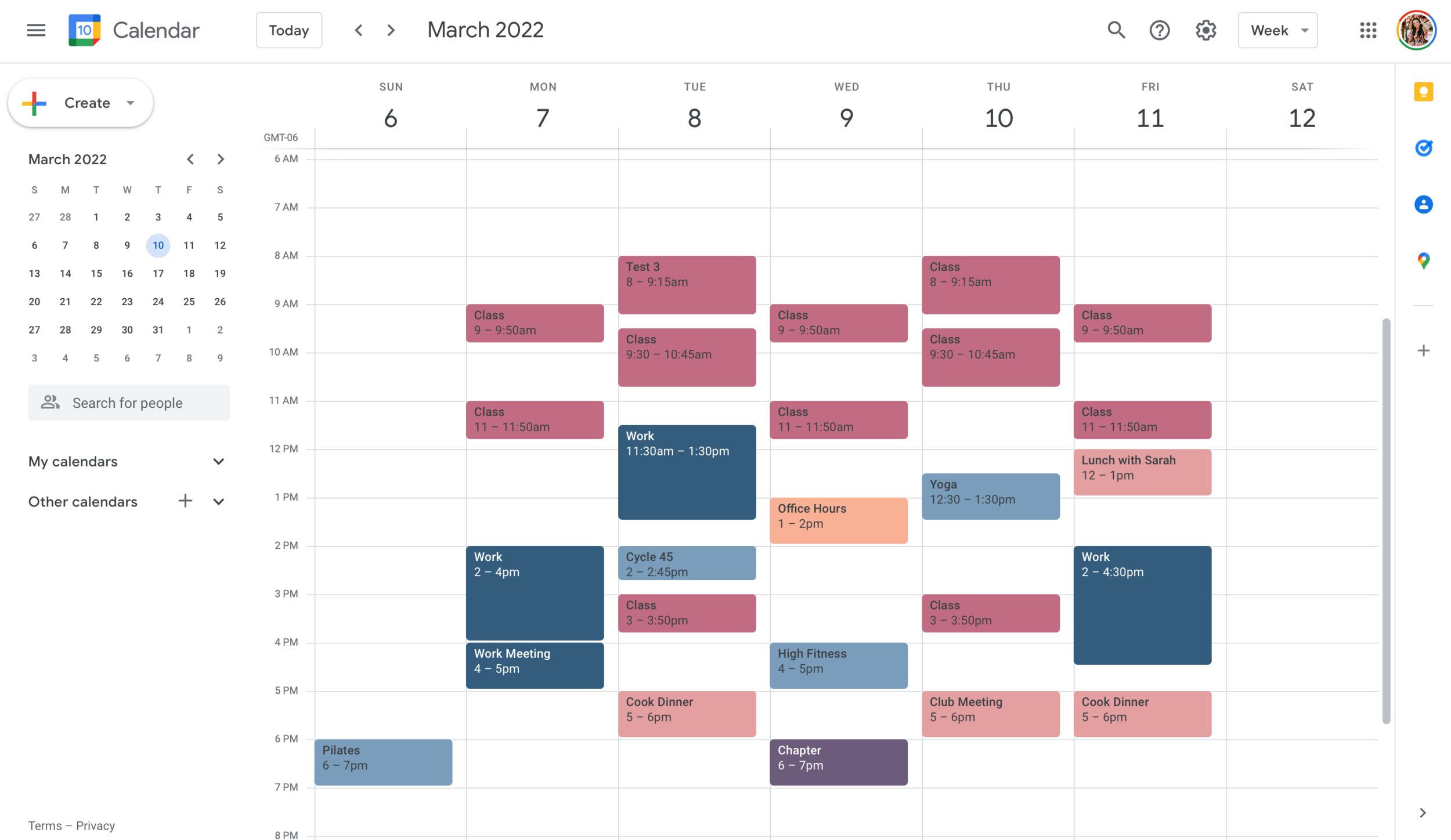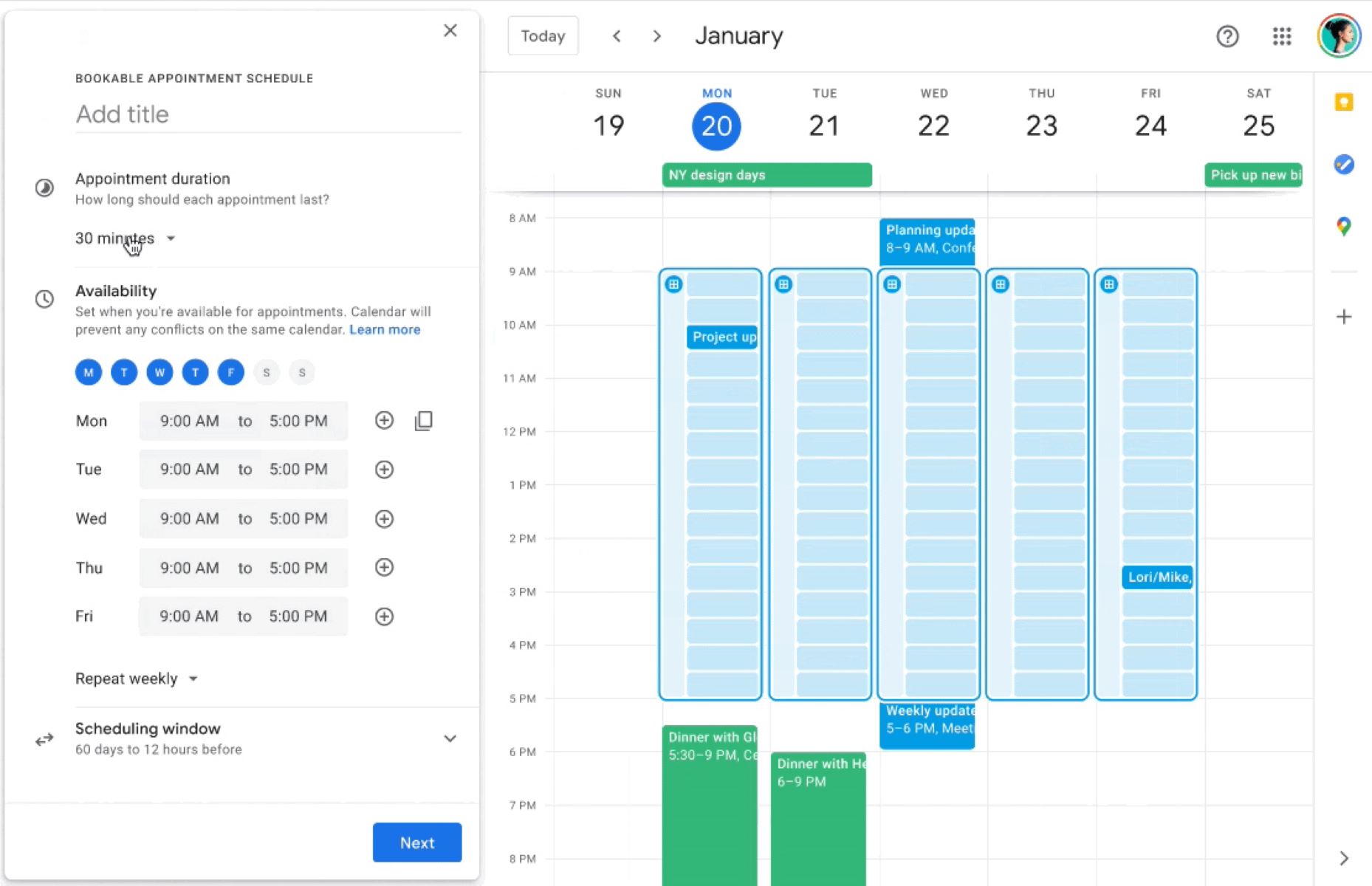Introduction
Google Calendar is a popular online scheduling tool that allows you to keep track of your appointments, events, and tasks. One of the great features of Google Calendar is the ability to share your calendar with others, making it convenient for collaboration, shared schedules, and keeping everyone on the same page.
When someone shares a Google Calendar with you, you can easily view and access their calendar from your own account. This enables you to see their events, appointments, and important dates, ensuring you never miss any important information or schedule conflicts.
In this article, we will explore the different methods and techniques to view a Google Calendar that has been shared with you. Whether you prefer using the Google Calendar app or the website, we’ve got you covered! We will also discuss how to interact with the shared calendar, including viewing events, modifying appointments, adding new events, responding to invitations, and syncing with other calendar apps.
If you often find yourself needing to view shared calendars, whether it’s for work, family, or any other collaborative efforts, this guide will provide you with the necessary steps to seamlessly access and manage shared Google Calendars. So, let’s dive in and learn how to view a Google Calendar shared with you!
Accessing a Shared Google Calendar
There are several methods you can use to access a Google Calendar that has been shared with you. The method you choose will depend on your preferences and the devices or platforms you use to access Google Calendar. Here are four common methods to consider:
- Method 1: Using the Link or Email Invitation
- Method 2: Using the Google Calendar App
- Method 3: Using the Google Calendar Website
- Method 4: Using the Google Calendar API
If someone shared their Google Calendar with you by sending a link or an email invitation, all you need to do is click on the link or accept the invitation. This will automatically add the shared calendar to your own Google Calendar account. You can then easily view and interact with the shared calendar from your calendar app or the Google Calendar website.
If you prefer using the Google Calendar app on your mobile device, accessing a shared calendar is quite simple. Open the app and tap on the menu icon (usually three horizontal lines) to open the sidebar. Scroll down and tap on the “Add Calendar” option. From there, select “Browse calendars of interest” and tap on the “Other calendars” tab. Here, you can find the shared calendar under the “Shared with me” section. Tap on the calendar to view its events and details.
To access a shared calendar using the Google Calendar website, open your web browser and go to calendar.google.com. Sign in to your Google account if you haven’t already. On the left side of the page, you will see a list of calendars. Scroll down until you find the “Other calendars” section, and click on the arrow icon next to it. Under the “Shared with me” tab, you will find the shared calendar. Click on it to view the calendar and its events.
If you’re a developer or have technical knowledge, you can access a shared Google Calendar using the Google Calendar API. The API allows you to programmatically interact with Google Calendar data, including retrieving events, adding events, and modifying calendar settings. You can find detailed documentation and examples on the Google Calendar API documentation website to guide you through the process.
Choose the method that suits your needs and preferences, and you’ll be able to easily access and view any Google Calendar that has been shared with you.
Method 1: Using the Link or Email Invitation
One of the easiest and most straightforward ways to access a shared Google Calendar is by using the link or email invitation provided by the calendar owner. Here’s how you can do it:
- Link: If someone has shared their Google Calendar with you, they may send you a direct link to the calendar. All you need to do is click on the link, and it will automatically add the shared calendar to your account. You can view and manage the calendar from your own Google Calendar interface.
- Email Invitation: Alternatively, you may receive an email invitation to access the shared calendar. Emails usually contain a button or link that says “Add to Calendar” or “Accept Invitation.” Simply click on the button or link, and it will take you to your Google Calendar, where you can confirm your acceptance and add the shared calendar.
Once you have opened the link or accepted the invitation, the shared calendar will be integrated with your own Google Calendar. You will be able to see the owner’s events, appointments, and important dates, alongside your own calendar entries.
It’s important to note that by using the link or email invitation, you gain read-only access to the shared calendar. This means you can view the events, but you won’t be able to modify or add any new events unless the calendar owner has given you permission to do so.
To view the shared calendar, open your Google Calendar by going to calendar.google.com and sign in to your Google account if you haven’t already. On the left side of the page, you will see a list of calendars. The shared calendar will appear under the “Other calendars” section.
Click on the checkbox next to the shared calendar’s name to display its events in your main calendar view. You can also click on the calendar’s name to view additional details, change its color, or adjust other settings.
Using the link or email invitation makes accessing a shared Google Calendar quick and effortless. Whether it’s for work, family, or group projects, you can easily stay informed and organized by accessing shared calendars through these simple methods.
Method 2: Using the Google Calendar App
If you prefer accessing Google Calendar on your mobile device, using the Google Calendar app is a convenient and user-friendly option. Here’s how you can access a shared Google Calendar using the app:
- Open the Google Calendar app on your mobile device. If you don’t already have it, you can download it for free from the App Store (iOS) or Google Play Store (Android).
- Tap on the menu icon, usually represented by three horizontal lines, located at the top-left corner of the app interface. This will open the sidebar.
- Scroll down the sidebar menu and tap on the “Add Calendar” option. It is usually represented by a plus (+) symbol.
- From the options presented, select “Browse calendars of interest.” This will allow you to explore and add shared calendars.
- Tap on the “Other calendars” tab. Here, you will find a list of calendars that have been shared with you.
- Scroll down until you find the shared calendar you want to view. Tap on the calendar’s name to select it.
- The shared calendar will now be added to your Google Calendar app. You can view and manage its events by tapping on the calendar icon at the bottom-center of the app interface. This will bring you to the calendar view, where you can see all the events for the selected date.
By accessing a shared Google Calendar through the Google Calendar app, you have the convenience of managing events and staying organized right from your mobile device. You can easily switch between different calendars and view events from multiple sources, ensuring you never miss any important updates or schedule conflicts.
Remember that the shared calendar will be integrated with your own Google Calendar. This means you can view the events and appointments on the shared calendar, but you may not be able to modify or add new events unless you have been granted permission by the calendar owner.
The Google Calendar app provides a seamless way to access and view shared calendars, making it an excellent option for staying organized on the go.
Method 3: Using the Google Calendar Website
If you prefer accessing Google Calendar from a web browser on your computer or laptop, you can easily view shared calendars using the Google Calendar website. Here’s how:
- Open your web browser and go to calendar.google.com.
- If you aren’t already signed in to your Google account, enter your credentials to log in.
- Once you are logged in, you will be directed to the main Google Calendar page.
- On the left side of the page, you will see a list of calendars. Scroll down until you find the “Other calendars” section.
- Click on the arrow icon next to the “Other calendars” section to expand it.
- Under the “Other calendars” section, you will find the “Shared with me” tab. Click on it.
- A list of shared calendars that have been shared with you will appear. Look for the calendar you want to view and click on it.
Once you have clicked on the shared calendar, it will be displayed alongside your existing calendars in the main calendar view. You can now see all the events, appointments, and important dates on the shared calendar.
The Google Calendar website allows you to interact with the shared calendar in various ways. You can view specific days, weeks, or months, switch between different views (such as the day, week, month, or agenda view), and even customize your calendar’s appearance and settings.
Remember that the level of access you have to the shared calendar may be limited. In most cases, shared calendars provide read-only access, meaning you can view the events but cannot modify or add new events unless the calendar owner has given you permission to do so.
Using the Google Calendar website to view shared calendars provides a comprehensive and feature-rich experience. It is particularly useful when you need to manage multiple calendars and have a larger screen to work with.
Accessing shared calendars on the Google Calendar website is straightforward and intuitive, making it easy to stay organized and keep track of important events and appointments.
Method 4: Using the Google Calendar API
If you are a developer or have technical knowledge, you can access a shared Google Calendar using the Google Calendar API. The API allows you to programmatically interact with Google Calendar data, including retrieving events, adding events, modifying calendar settings, and more. Here’s how you can use the Google Calendar API to access a shared calendar:
- Visit the Google Calendar API documentation to get started.
- Create a project in the Google Cloud Platform Console and enable the Google Calendar API for that project.
- Generate API credentials, such as an API key or OAuth 2.0 credentials, depending on your use case and authentication needs.
- Implement the necessary API calls in your application to retrieve the shared calendar data.
The Google Calendar API provides extensive documentation and code samples to guide you through the process of accessing shared calendars programmatically. You can find examples in various programming languages, including JavaScript, Python, PHP, and more.
With the Google Calendar API, you have complete control over the shared calendar’s data. You can retrieve specific events, filter them based on criteria, create new events, update existing events, and perform other actions based on your application’s requirements.
Keep in mind that using the Google Calendar API requires a solid understanding of programming and web development. If you are not familiar with coding, you may need the assistance of a developer or technical expert to implement and utilize the API effectively.
The Google Calendar API provides a powerful and flexible way to access shared calendars programmatically. It is the ideal solution if you need to integrate shared calendar data into your own applications or systems.
Make sure to consult the official Google Calendar API documentation for detailed instructions and guidance on using the API to access shared calendars. With the right knowledge and implementation, you can achieve seamless integration and efficient management of shared calendar data.
Viewing and Interacting with a Shared Google Calendar
Once you have successfully accessed a shared Google Calendar, you can start viewing and interacting with the calendar’s events. Here are some key actions you can take:
- Viewing Events: You can easily see the events on the shared calendar by navigating to the corresponding date or week. Each event will display its title, date, time, location, and any additional details provided by the calendar owner.
- Modifying Events: Depending on your level of access, you may have the ability to modify events on the shared calendar. This can include updating event details, changing the date or time, adding reminders, or even deleting events if permitted.
- Adding Events: If you have edit access to the shared calendar, you can contribute by adding your own events. This ensures that important appointments or upcoming deadlines are visible to all participants on the shared calendar.
- Responding to Invitations: If the shared calendar includes event invitations, you can respond directly from your calendar interface. You can accept, decline, or indicate your availability for the event, ensuring accurate attendance tracking and coordination.
- Syncing with Other Calendar Apps: If you use multiple calendar apps or services, you can sync the shared calendar with other applications. This allows you to access and view the shared calendar’s events from different devices or platforms that support calendar synchronization.
Keep in mind that your ability to interact with a shared Google Calendar depends on the permissions granted to you by the calendar owner. Read-only access only allows you to view events, while edit access grants you the capability to modify and contribute to the shared calendar.
By actively engaging with the shared calendar, you can stay informed and keep track of important dates, deadlines, and collaborative efforts. It ensures that everyone involved is on the same page and allows for efficient coordination and scheduling.
Remember to communicate with the calendar owner or participants to ensure clarity and avoid any conflicting changes or misunderstandings. Collaborative calendar tools are powerful tools for productivity, as well as effective communication and coordination among team members.
Take advantage of features such as notifications, reminders, and alerts to stay updated on upcoming events and avoid missing any important appointments. Utilize the flexibility and convenience of viewing and interacting with a shared Google Calendar to enhance your productivity and organization.
Viewing Events
When accessing a shared Google Calendar, one of the primary actions you’ll likely want to take is viewing the events that have been added to the calendar. Here’s how you can view events on a shared Google Calendar:
- Open the Google Calendar app or navigate to the Google Calendar website on your preferred device.
- If necessary, sign in to your Google account to access your personal calendar.
- In the calendar list, locate the shared calendar you want to view events from. It will typically be listed under the “Other calendars” section.
- Click or tap on the checkbox next to the shared calendar’s name to display its events in your calendar view.
- On the calendar interface, you’ll see events marked as colored blocks or dots on their respective dates. Each event will typically display its title, time, and any associated details.
- Navigate through the calendar to view events on different dates. You can switch between day, week, month, or agenda views depending on your preference.
By following these simple steps, you can easily view the events that have been added to the shared Google Calendar. This allows you to stay informed about upcoming appointments, meetings, or any other important occasions.
Furthermore, while viewing events, you may also have additional options to interact with them. For example, you can click or tap on an individual event to see more details such as the event’s location, description, and any attachments that have been included.
If multiple events are scheduled for the same time period, they may be displayed in a stacked or grouped format to provide a clear visualization of overlapping events. This helps ensure that you’re aware of any scheduling conflicts and can make appropriate arrangements.
Note that your level of access to a shared Google Calendar may determine whether you can view private events or see event details beyond what’s available to the general participants. The calendar owner has control over the privacy settings and can choose to share events with specific individuals or keep them private.
Taking advantage of the ability to view events on a shared Google Calendar allows you to stay organized, plan your own schedule accordingly, and ensure smooth coordination with other participants. Whether for personal, work, or collaborative purposes, viewing events is an essential feature that enables effective communication and seamless scheduling.
Modifying Events
When accessing a shared Google Calendar, you may sometimes need to modify events to make changes, updates, or additions. Depending on your level of access to the shared calendar, you can modify events in a few different ways:
- Changing Event Details: If you have edit access to the shared calendar, you can modify event details such as the event title, date, time, location, and description. Simply click or tap on the specific event in the calendar view and then make the necessary changes in the event details window.
- Adjusting Event Time or Duration: In case you need to shift the timing of an event or change its duration, you can click or tap on the event and then drag the edges of the event block to the desired time slot or adjust the duration accordingly. This way, you can easily accommodate any schedule changes or unforeseen circumstances.
- Adding Reminders or Notifications: When modifying an event, you can also set up reminders or notifications to ensure you don’t forget about important appointments. Add a reminder to receive a notification a specific time before the event, or create a notification to be alerted at a particular time or date.
- Assigning Event Colors or Labels: To improve visual organization and categorization of events, you can assign different colors or labels to them. This can help you differentiate between different types of events or prioritize them based on their importance or urgency.
- Managing Recurring Events: If an event occurs regularly, such as a weekly meeting or monthly appointment, you can modify the series of recurring events by editing the main event. From there, you can make changes to the series, including modifying the recurrence pattern, exceptions, or end date.
With the ability to modify events on a shared Google Calendar, you can keep the calendar up to date, make any necessary adjustments, and ensure everyone involved is aware of any changes. This fosters effective collaboration, avoids confusion, and optimizes scheduling.
It’s important to note that the level of access you have to modify events may vary, depending on the permissions granted by the calendar owner. Read-only access restricts you from making any changes, while edit access allows you to modify events to an extent determined by the calendar owner.
To avoid conflicts or miscommunications, it’s always a good practice to communicate any modifications made to shared events with other participants via additional channels such as email or chat. This ensures that everyone is aware of any updates or changes and can adjust their own schedules accordingly.
By utilizing the ability to modify events, you have the flexibility to adapt to changing circumstances, keep the shared calendar accurate and up to date, and facilitate smooth collaboration among all participants.
Adding Events
When using a shared Google Calendar, you may need to add your own events to the calendar to ensure that important appointments, meetings, or deadlines are visible to all participants. Adding events to a shared Google Calendar is a straightforward process. Here’s how you can do it:
- Open the Google Calendar app or navigate to the Google Calendar website on your preferred device.
- If necessary, sign in to your Google account to access your personal calendar.
- Select the shared calendar to which you want to add an event. It will typically be listed under the “Other calendars” section.
- Choose the date and time for your event. You can either select the desired date on the calendar view or click on the “Create” or “+” button to open the event creation dialog.
- In the event creation dialog, provide the necessary details for your event, such as the title, date, time, location, and any additional information.
- Choose whether the event should be a one-time occurrence or a recurring event. If it is a recurring event, you can select the recurrence pattern, such as weekly, monthly, or custom options.
- Set any desired reminders or notifications to ensure you are alerted before the event starts.
- Click or tap the “Save” or “Create” button to add the event to the shared Google Calendar. The event will now be visible to all participants with the appropriate access level.
By following these steps, you can easily contribute your own events to a shared Google Calendar, keeping everyone involved informed about your schedule and upcoming commitments.
When adding events, it’s essential to follow any guidelines or preferences set by the calendar owner. They may have specific requirements or formatting instructions to maintain consistency and clarity across the shared calendar.
It’s also a good practice to communicate any added events with the other participants. This ensures that they are aware of new entries and can make any necessary adjustments to their schedules if needed.
By actively adding your events to a shared Google Calendar, you contribute to the collaborative effort and help maintain an accurate and comprehensive calendar that benefits all participants. This promotes efficient coordination, avoids scheduling conflicts, and ensures everyone stays on the same page.
Responding to Invitations
When participating in a shared Google Calendar, you may receive event invitations from the calendar owner or other participants. Responding to these invitations is crucial for accurate attendance tracking and coordination. Here’s how you can respond to event invitations on a shared Google Calendar:
- Open the Google Calendar app or navigate to the Google Calendar website on your preferred device.
- If necessary, sign in to your Google account to access your personal calendar.
- In the calendar interface, locate the event invitation on the shared calendar. It will typically be marked with a special icon or indicated as an invitation.
- Click or tap on the event invitation to open the event details.
- In the event details, you will find options to accept, decline, or indicate your availability for the event. Choose the appropriate response based on your availability and intention to attend the event.
- If necessary, add any comments or notes to provide additional information or context to the event organizer and other participants.
- Click or tap the “Save” or “Respond” button to send your response to the event invitation. The calendar owner and other participants will be notified of your acceptance, declination, or availability for the event.
By responding to event invitations, you help the event organizer and other participants plan and organize their schedules accordingly. It ensures accurate attendance records and allows for smooth coordination.
If you need to modify your response after initially responding to an invitation, you can do so by going back to the event details and clicking or tapping on the appropriate response option again. This allows you to adjust your availability as needed.
Remember to respond to event invitations promptly, especially if you know whether or not you’ll be able to attend. A timely response helps with event planning and avoids any potential confusion or delays in communication.
Communicate with the event organizer or other participants through additional channels, such as email or chat, if there are any specific requirements, questions, or concerns regarding the event. This ensures clear and effective communication and helps streamline the coordination process.
By actively responding to invitations on a shared Google Calendar, you contribute to an organized and efficient scheduling experience for all participants. It promotes transparency, facilitates collaboration, and ensures that everyone is on the same page regarding event attendance and availability.
Syncing with Other Calendar Apps
Syncing a shared Google Calendar with other calendar apps or services allows you to access and view the shared calendar’s events from multiple devices or platforms. This ensures that you stay updated and have seamless access to the shared calendar regardless of the calendar app or service you prefer. Here’s how you can sync a shared Google Calendar with other calendar apps:
- Google Calendar App: If you’re using the Google Calendar app, syncing with a shared calendar is automatic as long as you have added the shared calendar to your account. The shared calendar’s events will be visible in the Google Calendar app alongside your own events.
- iOS Calendar: To sync a shared Google Calendar with the iOS Calendar app, go to your device’s Settings, select “Calendar,” and then choose “Accounts.” Add your Google Account if it’s not already connected and ensure the “Calendar” toggle is enabled. The shared calendar’s events will now be synced and displayed in the iOS Calendar app.
- Outlook Calendar: To sync a shared Google Calendar with the Outlook Calendar, open Outlook and go to the calendar view. Click on “Add calendar” and select “From the Internet.” Copy the shared calendar’s URL from Google Calendar and paste it into the URL field in Outlook. Follow the prompts to add the calendar, and the shared calendar’s events will be synced with your Outlook Calendar.
- Other Calendar Apps: Many other calendar apps support syncing with a Google Calendar. Consult the app’s documentation or settings to find the option for adding an external calendar. Enter the shared calendar’s URL or log in with your Google Account to connect and sync the shared calendar’s events with the app.
By syncing a shared Google Calendar with other calendar apps, you can access the shared calendar’s events using your preferred app or device. This provides flexibility and allows you to manage and view the shared calendar alongside your other calendars in a unified interface.
It’s important to note that syncing with other calendar apps may have limitations or variations depending on the specific app or platform. Some apps may offer read-only access to the shared calendar, while others may allow editing and event management. Take some time to explore the settings and features of your chosen calendar app to determine the full range of syncing capabilities.
Remember that changes made to the shared calendar, either on the Google Calendar website or through the Google Calendar app, will be reflected in the synced calendar app shortly. However, be aware that syncing may not be instantaneous and could rely on the app’s refresh interval or require manual sync initiation.
By taking advantage of syncing functionality, you ensure that you have access to the shared calendar’s events wherever and whenever you need them. It streamlines your scheduling process, avoids double bookings, and keeps you organized across all your calendar apps and devices.
Conclusion
Having the ability to access and view a shared Google Calendar is a valuable tool for collaboration and coordination among individuals or groups. Whether it’s for work, family, or any other collaborative effort, being able to stay on top of important events and appointments is essential for effective scheduling and organization.
In this article, we explored various methods for accessing a shared Google Calendar. You can use a link or email invitation, utilize the Google Calendar app, access the Google Calendar website, or even work with the Google Calendar API for more advanced integrations. Choose the method that fits your needs and preferences to seamlessly access the shared calendar.
Once you have accessed the shared calendar, you can view events, modify existing events, add your own events, respond to invitations, and sync the calendar with other calendar apps. These actions allow you to stay informed, make necessary changes, contribute to the shared calendar, and coordinate with other participants effectively.
Remember to communicate with the calendar owner or other participants to ensure clarity and avoid any conflicts or misunderstandings. Actively engaging with the shared calendar and adhering to any guidelines set by the calendar owner will ensure a smooth collaboration experience.
The versatility and convenience of Google Calendar offer powerful features that make managing shared calendars a breeze. Take advantage of the available tools and options provided by Google Calendar to enhance your productivity, stay organized, and streamline your scheduling efforts.
By integrating shared Google Calendars into your workflow, you can ensure that everyone involved is on the same page, deadlines are met, and appointments are well-coordinated. Shared calendars promote transparency, improve communication, and foster collaboration within teams and groups.
So, whether you’re working on a team project, planning family events, or managing your work schedule, make the most of the shared Google Calendar features to stay organized, efficient, and on top of your commitments.







